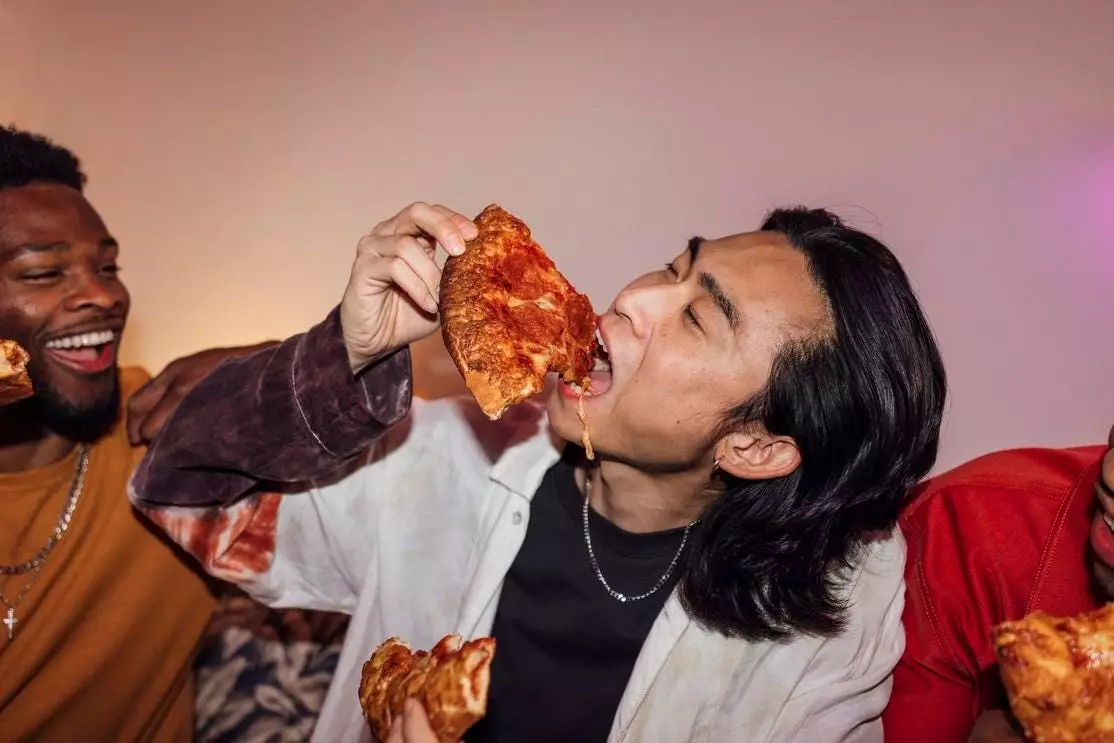The phenomenon commonly referred to as the “munchies” is not merely a playful stereotype associated with cannabis culture; it’s a scientifically validated response triggered by the complex interplay between cannabinoids and our body’s biological systems. Research indicates that when tetrahydrocannabinol (THC), the psychoactive compound in cannabis, is introduced into the body, it activates the endocannabinoid system, a critical part of our neurological framework. The result? Heightened senses of taste and smell that make even the most mundane snack seem like a gourmet experience.
This sensory elevation is exacerbated by THC’s influence on the hormone ghrelin, which is responsible for stimulating appetite. This dynamic prompts a dual response: an overwhelming urge to eat and altered perceptions that make food seem overwhelmingly pleasurable. Additionally, cannabis enhances the release of dopamine in the brain’s reward centers, specifically the striatum. Thus, the munchies become more than just cravings; they evolve into a cyclical reward loop, compelling users to seek out and savor food in profoundly satisfying ways.
Fast Food and Emotional Comfort: The New Norm
Cultural shifts have transformed the landscape of snacking post-cannabis use, especially during cannabis-themed celebrations like 4/20. The juxtaposition of cannabis consumption and fast food consumption has become a mainstream narrative, where the two activities are often interlinked. Americans increasingly turn to fast food, driven not just by craving but by a quest for comfort and convenience.
Reports indicate that a staggering 75% of Americans indulge in fast food at least once a week, with Gen Z and Millennials leading the charge. Their motivations—comfort, cravings, and the convenience of delivery apps—affect their choices during heightened appetitive states. This collective move toward convenience illustrates not just a dietary pattern but a cultural phenomenon where our emotional states dictate what fills our bowls and plates.
In this context, fast food is not merely sustenance; it serves as emotional armor, offering a reliable escape from life’s stresses. The ease of accessing these food items via mobile applications further cements their presence in our lives, aligning perfectly with the impulsive nature of the munchies.
The Evolving Perception of Cannabis and Its Users
The growing acceptance of cannabis usage can be seen in changing attitudes within public health discussions. It is no longer stigmatized or seen solely as a moral failing but is rather framed as a measurable behavior, akin to diet or exercise. As cannabis becomes part of public health metrics alongside fast food consumption, we’re witnessing a significant cultural softening around its use.
As acceptance rises, so does the influence of brands wanting to capitalize on this shifting perception. Fast food companies are beginning to cater to the cannabis demographic with strategic promotions tailored to appeal to this audience. The successful intertwining of cannabis culture with fast food not only normalizes cannabis use but also adds a level of social legitimacy, making it increasingly acceptable for everyone—not just the so-called fringe group—to engage in both habits.
Branding and Marketing: The New Munchies Marketplace
Brands are astutely aware of the power of catering to the munchies market. Fast-food giants like Taco Bell and Jack in the Box have successfully rolled out promotional items designed to appeal to cannabis users without overtly acknowledging it. This clever marketing strategy capitalizes on consumer needs with extravagant offerings that appear chaotic yet satisfyingly indulgent.
As the data suggests, the munchies phenomenon isn’t merely confined to younger users; it spans generations. The appetite for satisfying snacks reflects a broader demographic shift embracing indulgence—one that blurs traditional boundaries around food consumption. Seriously rethinking what it means to snack, this expansive view recognizes that the relationship between cannabis and appetite is intricate and far from straightforward.
The Complex Relationship Between Cannabis, Appetite, and Health
Intriguingly, even though cannabis usage frequently heightens cravings, studies hint at a disconnect between the consumption of cannabis and the typical adverse health outcomes often associated with increased food intake. Some research suggests that cannabis might lead to lower obesity rates and a decreased risk for conditions like diabetes. It posits that the munchies can lead to eating differently rather than simply consuming more—a nuanced and often overlooked perspective.
Thus, what may initially seem like a straightforward relationship—an increase in cravings leading to weight gain—may be more complicated than anticipated. The growing body of evidence challenging traditional narratives offers a new lens through which to view cannabis users and their eating behaviors. This opens up meaningful discussions about satisfaction, choice, and health beyond simplistic conclusions about indulgence.
The interplay between cannabis, culture, and cravings is evolving, urging us to reconsider our preconceived notions about the role of cannabis in our lives and its implications on our eating habits.


Leave a Reply